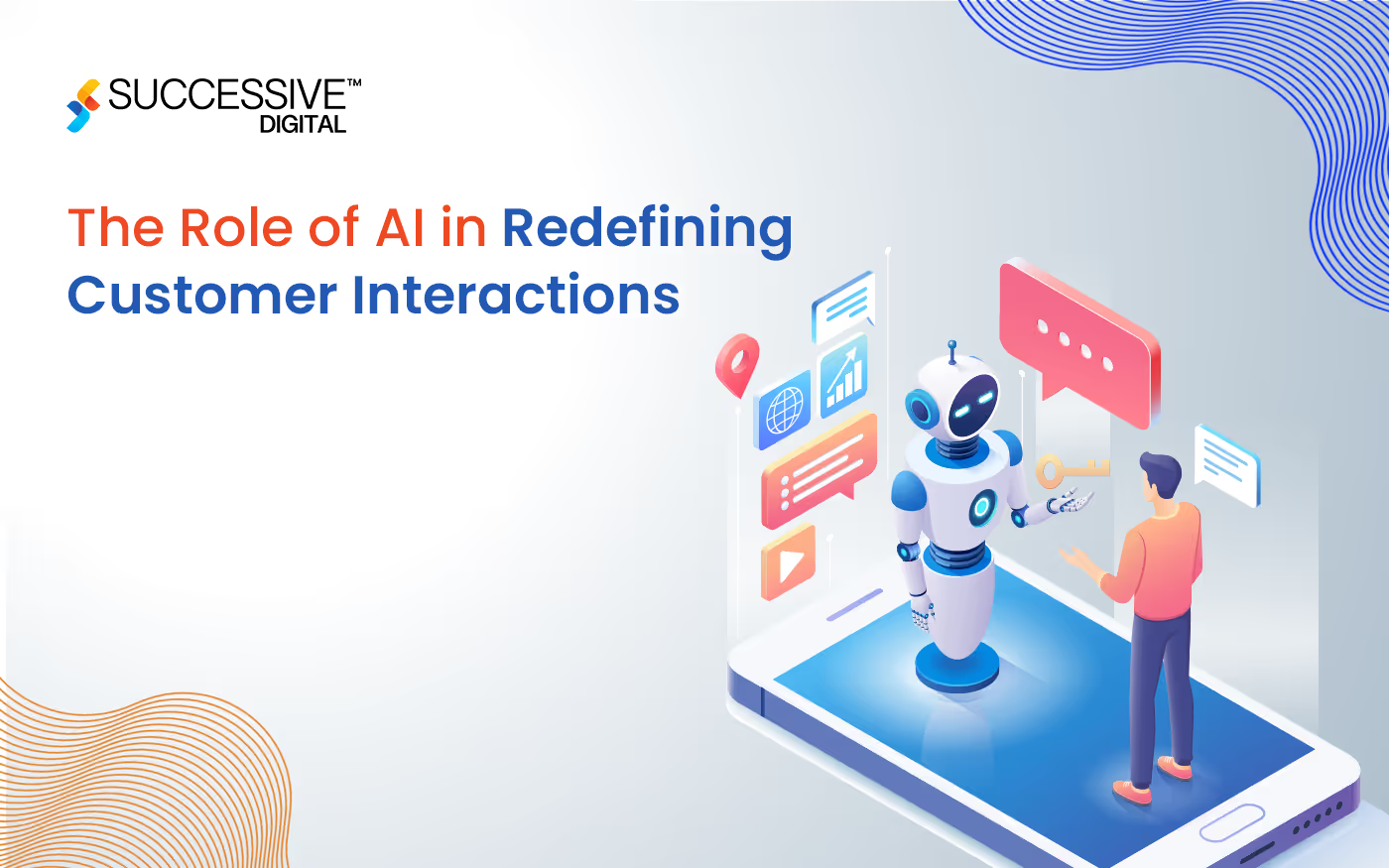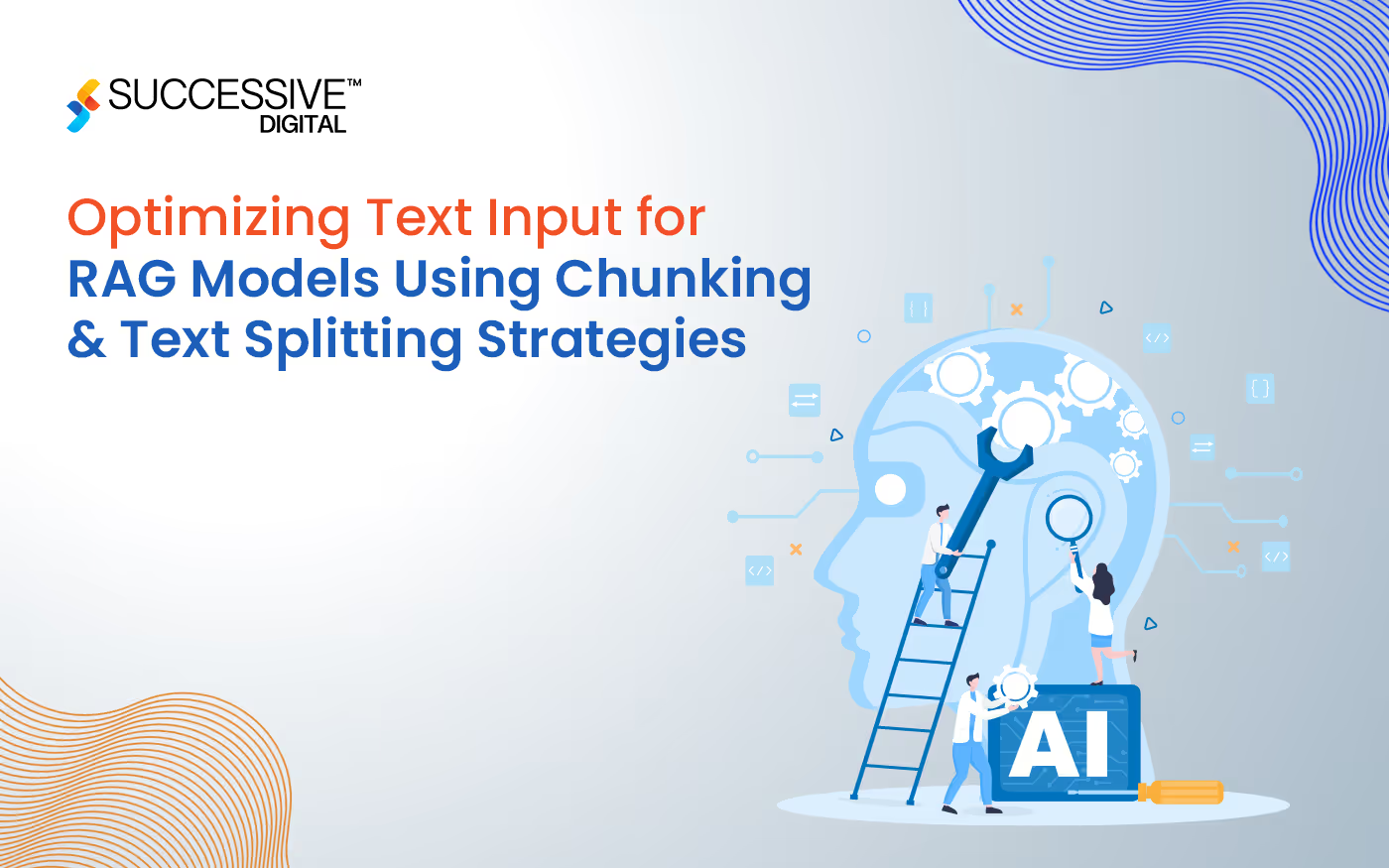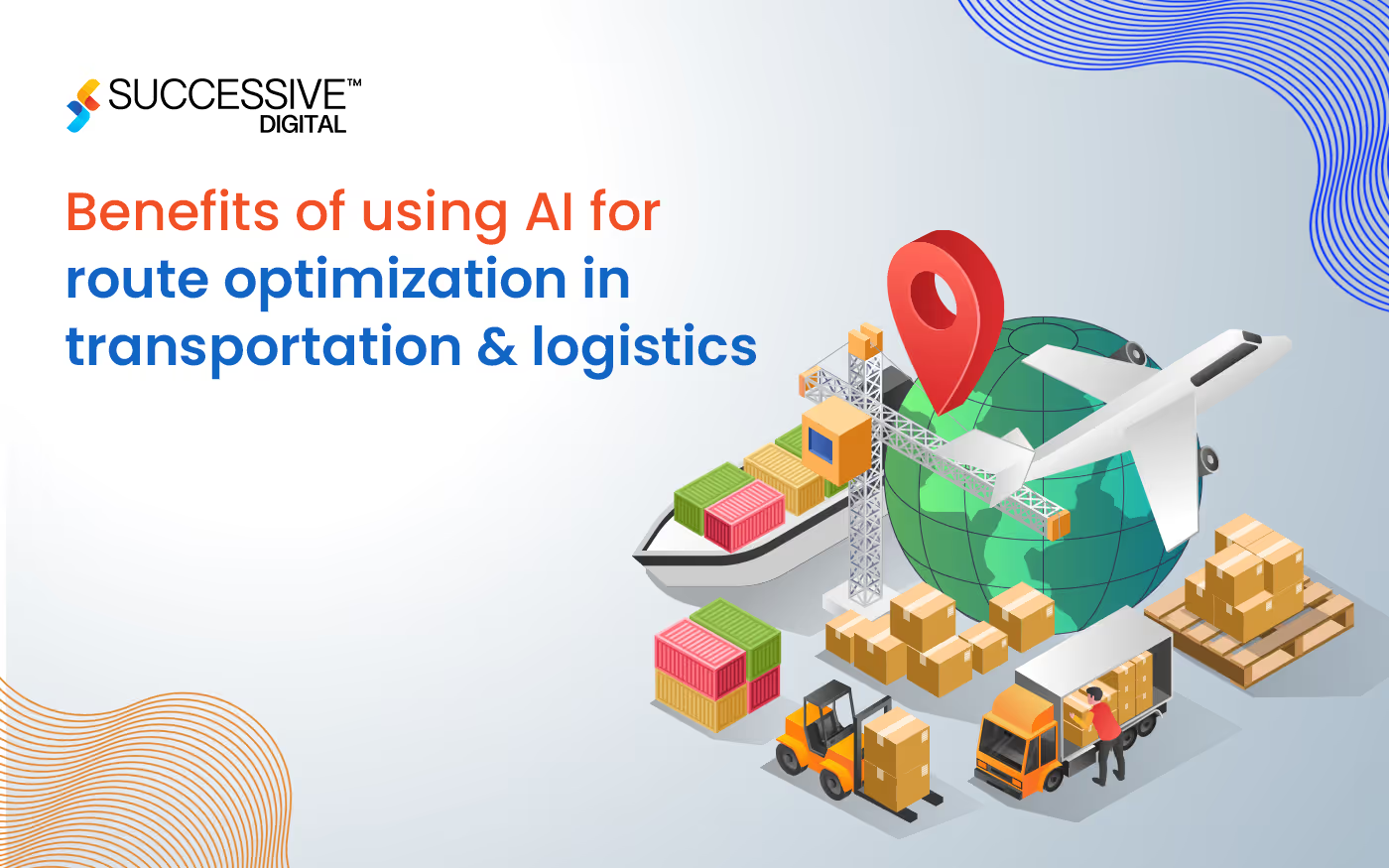There’s nothing quite like the personal touch of a knowledgeable customer interaction when trying to sort out a mishap or a query with a customer. Even in a world with a wide and rapid adoption of AI — with a projection of 80% of customer interactions to be managed by AI by 2025 — many customers crave the humaneness and immediacy through AI-driven solutions. AI has proven to be a new chapter for customer experience across industries, and the key to success in this new AI-powered customer service dynamic is deploying technology and designing it with the customer’s priorities and preferences at the forefront. By integrating sophisticated AI-powered customer service tools, companies are finding innovative ways to let customers dictate the terms of their interactions across various channels. This is all to help customers feel genuinely in charge. This guide explores the role of AI in redefining customer interactions and what the future of AI looks like.
Evolution of Customer Interactions
When we think about how businesses have interacted with customers over the years, it’s fascinating to see how much has changed.
In-person Customer Interaction
In the early days, in-person interactions were the backbone of customer service. This face-to-face communication allowed for personal connections and immediate feedback. Customers could ask questions, express concerns, and receive customized advice on the spot.
Phone-Based Interactions
Then came the telephone, which transformed how we communicated. Customers could reach businesses without stepping outside their homes with a simple call. This shift made getting answers easier and allowed more widespread access to products and services.
Web-Based Interactions
Fast forward to the late 20th century, when the internet began to take off. Suddenly, web-based interactions opened up a new world for businesses and consumers. Websites became digital storefronts that operated around the clock, allowing customers to browse products and services conveniently. Email communication added another layer, enabling customers to reach out with inquiries without picking up the phone.As technology advanced further, live chat features emerged on websites, and social media platforms became popular for real-time engagement—combining the immediacy of phone calls with the convenience of online browsing.
The Digital Shift
This digital shift has been the foundation of establishing digital experiences for customers across industries, resulting in the adoption of AI to enhance the customer experience. As consumers increasingly expect instant responses, product, and service offering companies have had to change their strategies to match customer expectations. With the rise of AI-powered customer service, customers can move seamlessly between channels without losing context or continuity. Due to the many benefits offered by these AI customer engagement tools, the adoption is so rapid that 52% of customer service organizations worldwide use AI in some capacity, as revealed by a Salesforce survey in 2022.AI enhances the quality of customer interaction by personalizing experiences based on individual preferences, making customers feel valued. It improves efficiency through tools like conversational and Gen AI chatbots, providing instant support and freeing human agents for complex issues. AI also anticipates customer needs, offering proactive service that builds loyalty.
Understanding AI in Customer Interactions
The customer interaction touchpoints are the moments when customers engage with a brand, and integrating AI into these interactions can significantly enhance the digital experience.Customer interaction has two or more parties involved, a company or brand and a prospect or customer, which is determined by:
- Mutual or reciprocal action or influence
- To act upon one another
Think point!However, most CX leaders misunderstand Customer interactions with customer support or service. An interaction is a subset of the first moment of customer service/ engagement, which is a subset of customer experience.Let’s explore some key Customer Interaction Touchpoints and how AI is transforming them.
Initial Web-based Interactions
When customers visit a website, they often seek information or assistance. They need assistance to guide them toward the next or final steps. Websites can employ AI technologies such as natural language processing (NLP), machine learning (ML), and computer vision (CV) to comprehend and respond to users intelligently. This allows users to navigate through the website swiftly.AI-enabled chatbots, for example, can give real-time customer care, whilst personalized suggestions powered by machine learning algorithms can surface relevant material based on the user's preferences. Here, AI chatbots (both Conversational AI and Gen AI) provide instant assistance and a navigational guide by digesting their inputs. These chatbots mimic human-like interaction and provide additional support to the customer.For example- Myntra, a leading fashion e-commerce marketplace, utilizes Gen AI chatbots to help users create a complete occasion-wise fashion look. FashionGPT, an OpenAI integrated Gen AI bot, interacts with the users to answer frequently asked questions, guide users through product selections, and assist with checkout processes.
Email Communication
Email remains a vital channel for customer interactions; it's been in use for ages. With the help of AI, companies analyze incoming emails to categorize inquiries and prioritize them based on urgency. In case a customer emails about a billing issue, AI can flag it for immediate attention while routing less urgent queries to standard response queues. This ensures that critical issues are addressed promptly, enhancing overall responsiveness.
Social Media Interactions
Social media platforms are essential for customer engagement today. Seeing the wide adoption of multiple social media channels across all age groups, these are now even considered the first sites of interactions. With the help of sentiment analytics, AI customer engagement tools help users identify the intent of the post/comment/tweet in real-time.For example, if a customer tweets about a negative experience, AI-powered customer service alerts the team to respond quickly and mitigate any potential fallout. Additionally, Through predictive AI customer engagement, brands/service-offering organizations can identify trends through customer’s behavioral patterns.
Voice Assistants
Voice assistants are another rising touchpoint of AI-powered customer service that aims to provide quick and accurate information by establishing conversational relationships with users. The rise of smart speakers and voice-activated devices made voice assistants integral to customer interactions. Companies like Amazon use AI-driven voice technology to allow customers to place orders or get information simply by speaking.A service agent's ability to understand the customer's spoken language represents the foundation for creating empathic relationships. Empathy is centered around the individualized attention and caring a voice assistant can offer. Thus, the more a voice assistant showcases natural conversational behavior, the more a customer may find its social skills credible. As a result, users feel more comfortable interacting with an autonomous VA (Heerink et al., 2010; Ki et al., 2020). This hands-free customer interaction not only enhances convenience but also caters to users who prefer verbal communication over typing.
In-Store Experiences
Digital in-store solutions represent a transformation in how consumers interact with brands and purchase in-store. By integrating digital solutions into physical store locations, brands can not only meet consumer expectations but also differentiate themselves in a saturated market. Such as, some stores use AI-powered customer service kiosks that assist customers for self-service in finding products or checking prices without needing staff assistance. Additionally, Through predictive AI customer engagement tools/software, companies can predict foot traffic patterns within stores to optimize product placement and improve the shopping experience.
Customer Feedback Channels
Collecting feedback is an important part of customer interaction for continuous improvement. The implementation of AI-powered customer service solutions can streamline this process by analyzing survey responses and identifying common areas that require attention. AI-driven sentiment analysis uses natural language processing (NLP) to interpret the emotional tone behind customer feedback. For example, a restaurant chain might use AI to monitor reviews on platforms like Yelp or TripAdvisor. By analyzing the sentiment of these reviews, AI customer engagement solutions can detect patterns, such as recurring complaints about long wait times.
Point of Scale
Point of scale is the final touch point, yet the most crucial one, for customers to finish the purchase. Especially in ecommerce and retail businesses, an efficient POS streamlines the checkout process by automatically scanning items, improving customer satisfaction. However, AI-powered customer service POS solutions can minimize the fraud and duplication of transactions through machine learning algorithms. Additionally, from managing inventory levels to analyzing sales trends, AI can provide valuable insights to help you make data-driven decisions and drive growth, allowing businesses to scale operations quickly.
Digital Checkouts
Similar to the retail POS, digital checkout is the most overlooked yet crucial form of customer interaction that completes the overall customer journey. AI technologies integrated into the digital checkout process can assess client spending trends and preferences to provide personalized promotions and recommendations. These AI-powered solutions AI selects the most efficient routes for processing payments, minimizing transaction costs and processing times. This optimization helps ensure that transactions are completed swiftly and economically. Data security is still the biggest concern that people face while making transactions, especially while making payments through credit cards. Incorporating artificial intelligence into payment procedures can improve internal security and reduce the chance of fraudulent activity, especially adhering to Payment Card Industry Data Security Standard (PCI DSS).Simultaneously, AI can improve common know-your-customer (KYC) efforts by automating verification processes. This guarantees that customers, agents, consultants, and distributors behave responsibly and verify their identities correctly.Read how we developed a smart digital payment solution for a leading fintech firm.
How is AI redefining customer interactions?
Enhancing Personalization through AI
AI-enabled tools and softwares significantly improve customer interactions through personalized recommendations. With the use of predictive analytics, companies can analyze customer behavior and showcase items similar to their previous purchase patterns.Companies like Amazon have mastered this technique. When a customer browses products on Amazon, the platform doesn't just show items similar to what the user has looked at in the past; it uses complex algorithms to understand the preferences based on past purchases, browsing history, and even what other customers with similar tastes have bought.If a user frequently purchases gardening tools, Amazon might suggest related items like seeds or outdoor furniture.Here are some examples of companies utilizing AI to transform customer interactions:
- Spotify: The music streaming service uses AI to analyze listening patterns and preferences, generating personalized playlists like "Discover Weekly" that introduce users to new music tailored to their tastes. This not only keeps users engaged but also enhances their overall experience.
- Netflix: By utilizing AI algorithms to analyze viewing habits, Netflix offers personalized movies and show recommendations that keep subscribers returning for more content. Their recommendation engine is a key factor in reducing churn rates.
- ASOS: The online fashion retailer employs AI to provide personalized styling advice based on customer preferences and body types. This service enhances user experience by offering tailored outfit suggestions that cater to individual styles.
Improving Customer Engagement with AI-Powered Customer Service Tools: Benefits
AI customer engagement solutions play a major role in improving the overall digital experience. AI doesn't just make the customer's first interaction better; it also anticipates their needs before they arise, giving companies the right spot to promote products/services most relevant to the users. This proactive approach is made possible through predictive analytics, which analyzes historical data to identify patterns and trends. It a company notices that certain products often lead to customer complaints after purchase, they can reach out to customers proactively with tips or solutions before any issues escalate. Consider energy companies as an example. They utilize predictive analytics to monitor equipment health and anticipate probable outages due to maintenance requirements or adverse weather conditions. These organizations improve customer interaction and trust by informing them ahead of time about potential service disruptions and offering alternate choices.
Integration Across Multiple Channels for a Seamless Experience
Customers interact with brands across various touchpoints—websites, social media, email, and more. AI contributes to a seamless experience by combining these channels, ensuring that customers receive consistent service no matter where they interact with the company.For example, if you start a conversation with a chatbot on a company's website but then switch to their app for additional support, AI algorithms built into the systems can remember your prior interactions. This means you won't have to repeat yourself when you call again; the system remembers your context and gives consistent service.Companies like Amazon exemplify this approach by allowing customers to track orders through multiple platforms—their website or mobile app—while receiving timely updates via email or SMS. This level of multi-channel integration through AI enhances the customer experience.
Industry-Wise Use Cases
AI is revolutionizing the way customers make the first interaction with any business across various industries, making customer experiences more personalized, efficient, and engaging.
Healthcare
In healthcare, AI-powered customer service is truly making a difference. Gen AI-powered chatbots and virtual assistants help patients schedule appointments, get medication reminders, and even offer health advice. Giving them a feeling of being a virtual personal health concierge who is available 24/7.AI in also being used in EHR to streamline the patient interactions with physicians. EHR giant, EPIC EHR's system uses AI to generate progress notes, create draft responses to patient questions and assist with medical coding.The attempt to utilize AI in EHRs is largely improving patient-provider interactions. It allows clinicians to generate progress notes based on patient-provider conversations in the exam room, enables clinicians to construct an answer to a patient's question rapidly, and shows providers what has changed with a patient since they last saw them.
Financial Technology
The financial technology sector is also utilizing A.I. at large to enhance customer interactions.AI-powered chatbots and virtual assistants are becoming increasingly common in fintech applications, improving the initial level of digital experience. These tools can handle a wide range of customer inquiries—such as checking account balances or providing transaction histories—24/7, significantly reducing wait times and improving customer satisfaction. For instance, chatbots can resolve up to 80% of routine queries without human intervention.A.I. algorithms even help improve customer interactions with fraud analysis. A.I. algorithms analyze transaction patterns and identify suspicious activities. PayPal is a great example of a company using machine learning to keep money safe.
Retail and Commerce
Retail is another industry that's being transformed by A.I. With AI, conversational commerce has seen a new high. With the help of conversational bots, brands deliver a wide range of inquiries, from product information to order tracking, freeing up human agents to focus on more complex tasks.For example, Sephora's chatbot, available on Facebook Messenger, helps customers find the perfect products by asking questions about their preferences and skin type.Additionally, AI-powered voice interfaces allow customers to search for products, purchase, and even get personalized recommendations using natural language. Walmart has integrated voice ordering capabilities into its app, allowing customers to add items to their cart using Google Assistant or Siri. This feature not only enhances convenience but also provides valuable data for Walmart to improve its product recommendations and personalization efforts.ConclusionAI-powered customer service interaction can help businesses reach their digital experience goals by turning potential pain points into wow moments. The adoption of AI-powered solutions across industries provides layers of data-driven customization, speed, and innovation. New products and services, designed with the customer in mind, can result in the careful implementation of initial-level AI-powered customer service interactions and successfully eliminate the customer disconnect. Successive Digital is a customer experience consulting company that helping businesses addressing customer interaction challenges such as impersonal responses, long wait times and repetitive information sharing. Get in touch with our experts for more efficient AI customer engagement solution enablement.Explore our CX capabilites.
.avif)










.jpg)









